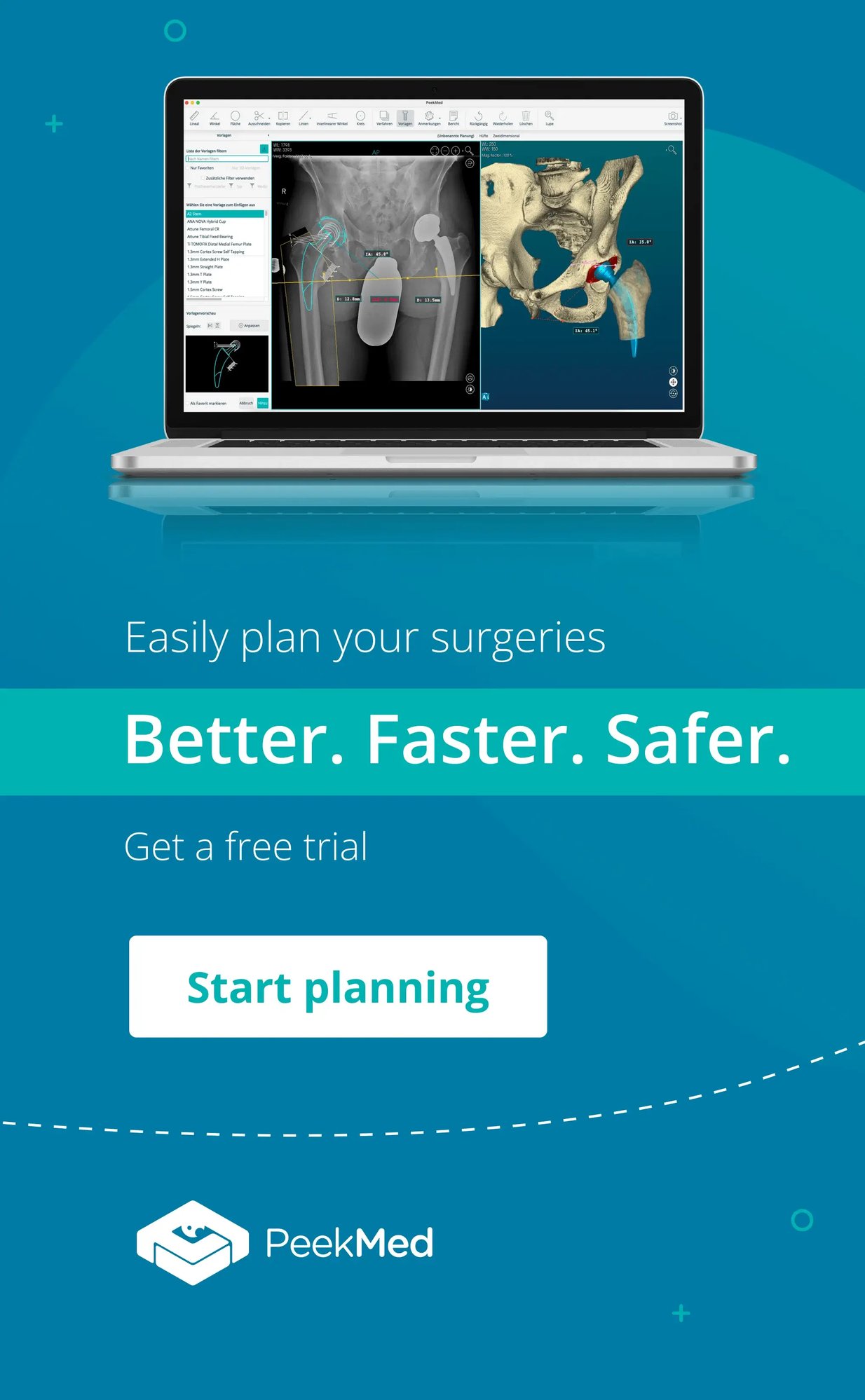PeekMed
Orthopedic surgery has evolved greatly in recent times, with technology enabling more accurate and successful procedures. Personalized orthopedic surgery is changing the way orthopedic surgeons approach patient care.
The act of undergoing surgery has always been a unique and personal experience for each patient. Once they are inside the operating room, they must put their trust and well-being entirely in the hands of the surgeon, making it an unparalleled healthcare encounter.
Despite this, the surgical process itself can become somewhat formulaic for the surgeon. Traditional surgery, particularly orthopedic surgery, has not yet been fully personalized in the way that we have seen with other forms of personalized medicine. Rather, surgery nowadays relies on estimations, approximations, and historical protocols that have been developed based on general patient responses to certain procedures.
By utilizing digital technology, such as virtual twins, 3D printed implants, and preoperative planning software, orthopedic surgeons can create custom treatment plans and provide proactive patient health management.
In this article, we'll explore how personalized surgery is transforming the field of orthopedics and improving patient outcomes.
What is Personalized Surgery?
Personalized surgery is a proactive approach to healthcare that focuses on the individual patient. Rather than using a one-size-fits-all method, it considers each patient's unique anatomy, medical history, and other factors to create a tailored treatment plan.
This approach focuses on the planning efforts made before the surgery itself to ensure maximum efficiency and effectiveness during the surgical process inside the OR.
Virtual Twins
One of the key tools in personalized surgery is the virtual twin, also known as a digital patient or patient-specific digital model. A virtual twin is a digital replica of a patient's anatomy, created using advanced imaging techniques such as CT scans or MRIs.
These models give surgeons an integrated understanding of a person’s health. They can plan and simulate procedures in a 3D environment, which leads to safer surgeries and more predictable outcomes.
It also enables the use of these models as guides for surgical planning and execution since it allows the surgeon to make informed decisions about which medical devices to use and how to use them.
Virtual patient monitoring, enabled by digital technology, facilitates tracking of a patient's progress remotely and makes data-driven decisions easier in real-time giving the exact care patients need.
Preoperative Planning
Preoperative planning is also an essential aspect of personalized orthopedic surgery. By using a patient's virtual twin and advanced imaging technology, surgeons can create a detailed plan for the procedure, reducing the risk of complications.
It is important for an orthopedic software to have 3D visualization technology that enables the generation of 3D bone reconstructions giving the surgeon a stereoscopic vision of the bone model.
This allows the surgeons to select the best implant or device for the patient's unique anatomy and condition, determine the optimal surgical approach, and practice the procedure in a virtual environment before performing it on the patient.
Preoperative planning simplifies pre-surgery decision-making and assists the surgeon during the procedure in accurately using surgical instruments in a less invasive manner.
3D Printed Implants and Surgical Devices
3D printing technology has been transforming the orthopedic industry and is another integral part of personalized surgery. Surgeons can create custom-made orthopedic implants and surgical devices based on a patient's virtual twin.
3D-printed medical implants are designed to fit a patient's unique anatomy perfectly, reducing the risk of complications such as implant loosening or failure.
These patient-specific implants can offer significant advantages over traditional off-the-shelf implants, including improved mobility and quality of life for patients with orthopedic conditions.
Digital Operating Room
The digital operating room, equipped with surgical software and augmented reality technology, is another important component of personalized surgery.
This technology allows surgeons to access a patient's virtual twin and virtual surgical planning in real-time through the use of navigation technology. This enables surgeons to make more precise and accurate decisions during the surgery, resulting in better outcomes for patients.
Also, using the virtual plan, the surgeons can pass on that information to a surgical robot which in turn is capable of performing the surgery with higher accuracy than manual techniques and placing the implant in the perfect position.
Is Personalized Surgery here to stay?
Personalized surgery is an exciting and rapidly evolving field that is transforming the way we approach orthopedic surgery and medicine as a whole. As the population ages and the demand for surgeries increases, personalized surgery will become even more critical.
While there may be some challenges associated with the adoption of this approach, such as the need for specialized training and access to advanced technology, the benefits for patients and the healthcare system make it a promising avenue for the future of medicine.



